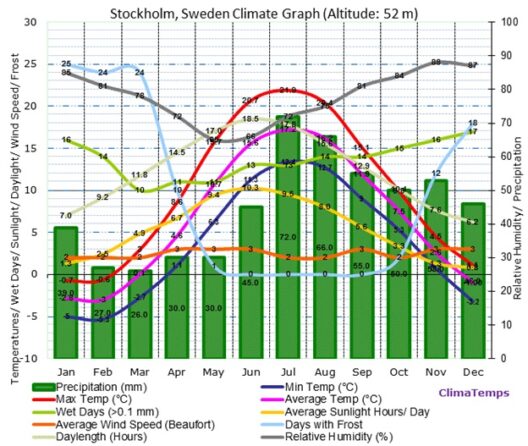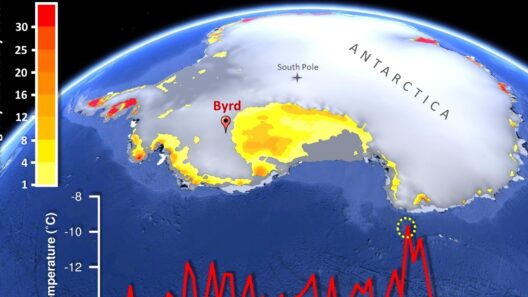Coastal deserts are fascinating ecosystems, yet they are currently at a critical juncture due to the escalating challenges posed by global warming. This phenomenon bears not only environmental implications; it also threatens the intricate web of life that is characteristic of these unique habitats. The relevance of understanding coastal deserts and their vulnerabilities cannot be overstated, especially in light of the harsh realities imposed by climate change.
Coastal deserts, such as the Atacama Desert in Chile and the Namib Desert in Africa, are defined by their arid conditions and proximity to oceanic bodies. The geography of these regions presents a paradox: they are often located adjacent to rich marine environments but remain devoid of significant moisture. This creates a delicate balance that is now being disrupted. Rising temperatures, altered precipitation patterns, and increased evaporation rates are all consequences of climate change that contribute to the precarious state of these regions.
One of the most pressing concerns is the impact of rising sea levels. As global temperatures surge, polar ice caps melt and ocean waters expand, resulting in encroachment upon coastal landscapes. For coastal deserts, this phenomenon leads to salinization of soil, making it increasingly difficult for indigenous flora and fauna to thrive. The displacement of these species not only disrupts local ecosystems but also threatens the livelihoods of communities that depend on them.
Furthermore, increased temperatures can exacerbate the aridity of these regions. While coastal areas traditionally benefit from the marine layer, rising sea temperatures can alter wind patterns and reduce the formation of fog – a critical source of moisture for many coastal desert species. For example, in the Namib Desert, fog harvesting is a vital adaptive strategy for both its human inhabitants and the unique plant life that has evolved to thrive in this environment. As fog becomes less reliable, the survival of these organisms hangs in the balance.
While the challenges posed by global warming are formidable, there exists an array of adaptive strategies that stakeholders can pursue. For instance, enhancing water conservation techniques is crucial. Implementing rainwater harvesting systems and adopting xeriscaping practices can mitigate the impacts of aridity, providing essential hydration to both crops and native plants. By embracing such sustainable practices, communities can foster resilience against the uncertainties of climate change.
Scientific research plays an indispensable role in addressing the vulnerabilities faced by coastal deserts. Investigating the physiological responses of endemic species to climate stressors can unveil critical insights into their adaptive capacities. Conservation efforts must also prioritize genetic diversity, ensuring that these ecosystems remain resilient in the face of rapid environmental shifts. Preserving biodiversity is not merely an ecological concern; it has profound implications for the overall health of our planet.
However, efforts must also extend beyond the natural world. Community engagement and education are pivotal in fostering a culture of sustainability. By disseminating knowledge regarding the importance of these landscapes and the threats they face, individuals are more likely to take up arms in defense of their environment. Workshops, outreach programs, and collaborative projects can empower communities, equipping them with the tools necessary for adaptation and mitigating negative impacts arising from climate change.
In addition to local measures, policy intervention is critical in the pursuit of sustainable solutions. Legislation that emphasizes land-use planning, protection of critical habitats, and support for renewable energy initiatives can pave the way for long-term resilience. Policymakers should recognize the interconnectedness of environmental systems and adopt a holistic approach to manage the multifaceted challenges faced by coastal deserts.
A key concern that deserves attention is the economic implications of adaptation strategies. Many coastal desert regions rely heavily on tourism, which directly correlates with the health of their unique ecosystems. As climate change leads to habitat degradation, the resultant decline in flora and fauna can diminish a destination’s allure. Thus, diversifying local economies by investing in sustainable tourism and eco-friendly practices could provide a buffer against the economic repercussions of climate change.
Furthermore, restoring natural habitats can play a vital role in sequestering carbon and mitigating the impacts of global warming. Initiatives such as reforestation, wetland restoration, and the creation of protected areas can significantly bolster the resilience of coastal deserts. Such actions not only promote ecological stability but also enhance the aesthetic and recreational value of these regions, fostering a renewed appreciation for their inherent beauty.
As we contemplate the environmental uncertainties ahead, fostering collaboration among scientists, policymakers, and communities will be indispensable. Information sharing and cross-disciplinary partnerships can cultivate innovative solutions to the challenges that coastal deserts face. Embracing a multifaceted approach allows for a comprehensive understanding of how diverse factors interplay within these ecosystems, guiding effective conservation efforts.
The crisis infiltrating coastal deserts serves as an urgent reminder of the broader implications of global warming. Adaptation is not merely a choice; it is an imperative. The consequences of inaction will echo far beyond the arid sands and rugged coastlines, affecting global biodiversity, human health, and economic stability. As stewards of our planet, it is incumbent upon us to galvanize efforts towards safeguarding these enigmatic ecosystems, ensuring they endure for generations to come.







